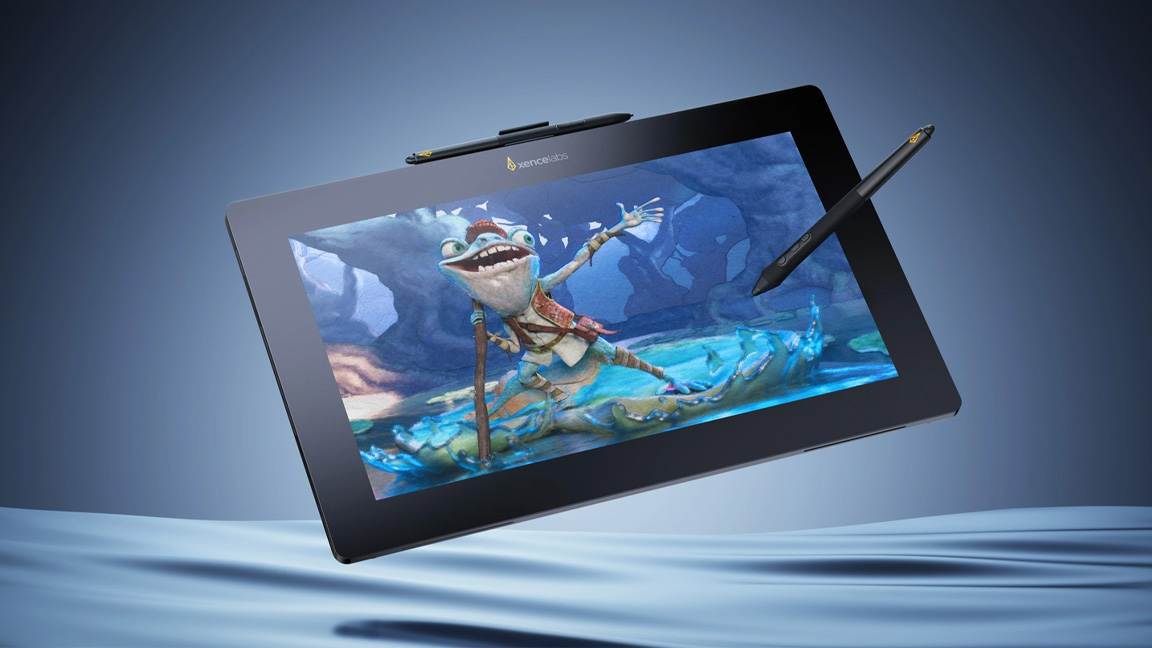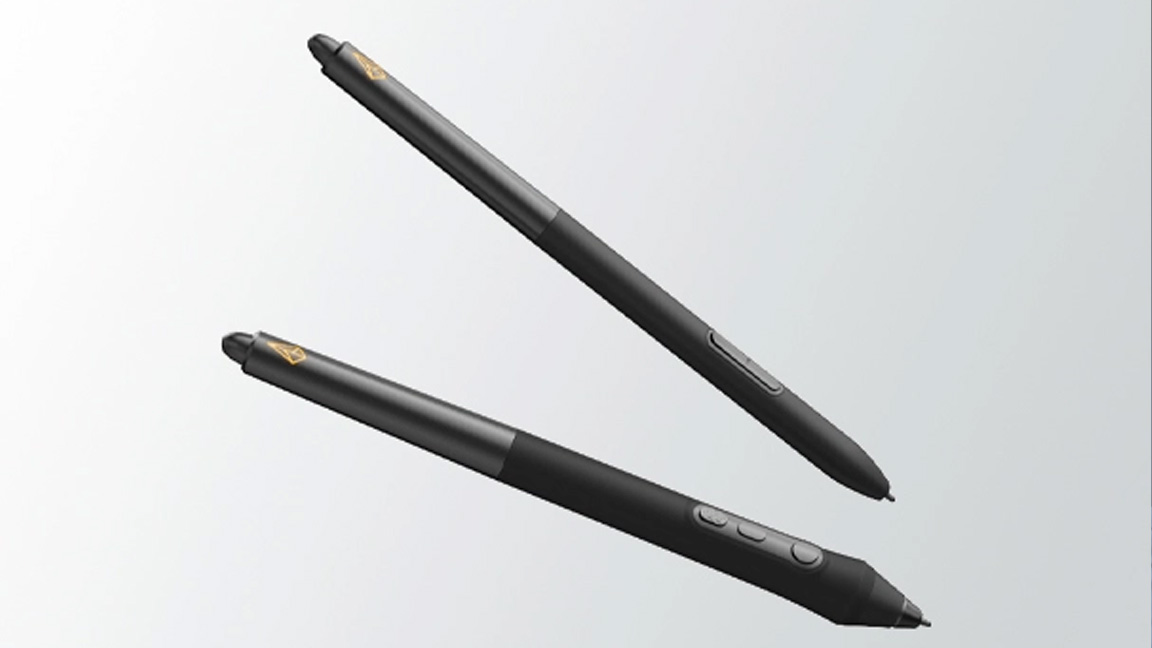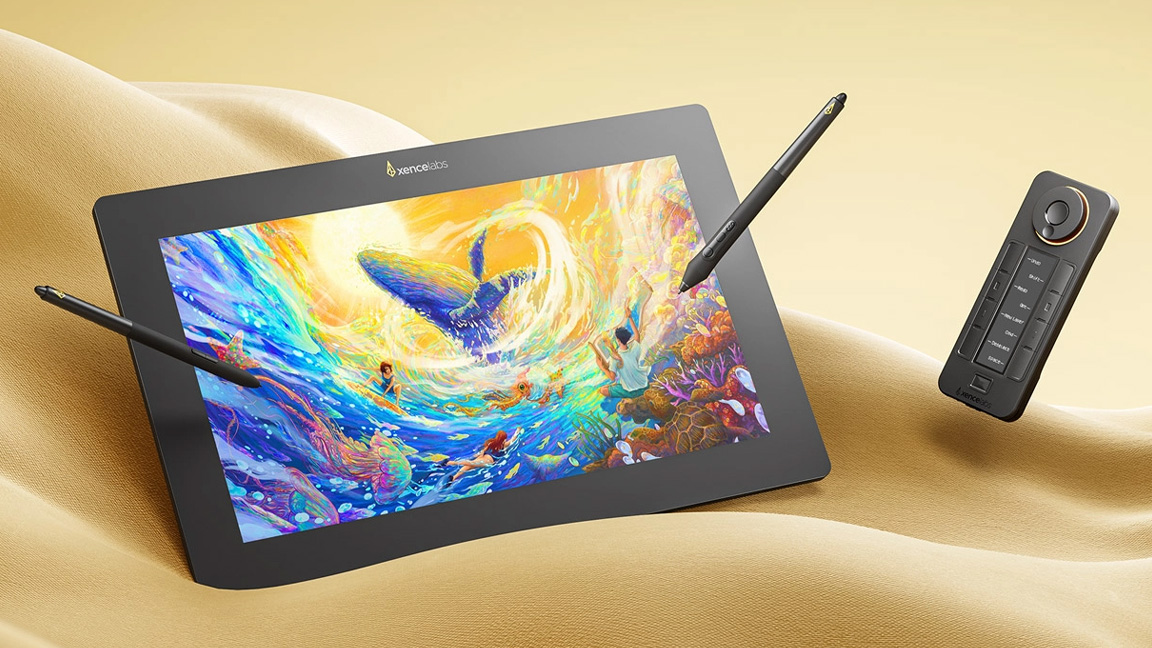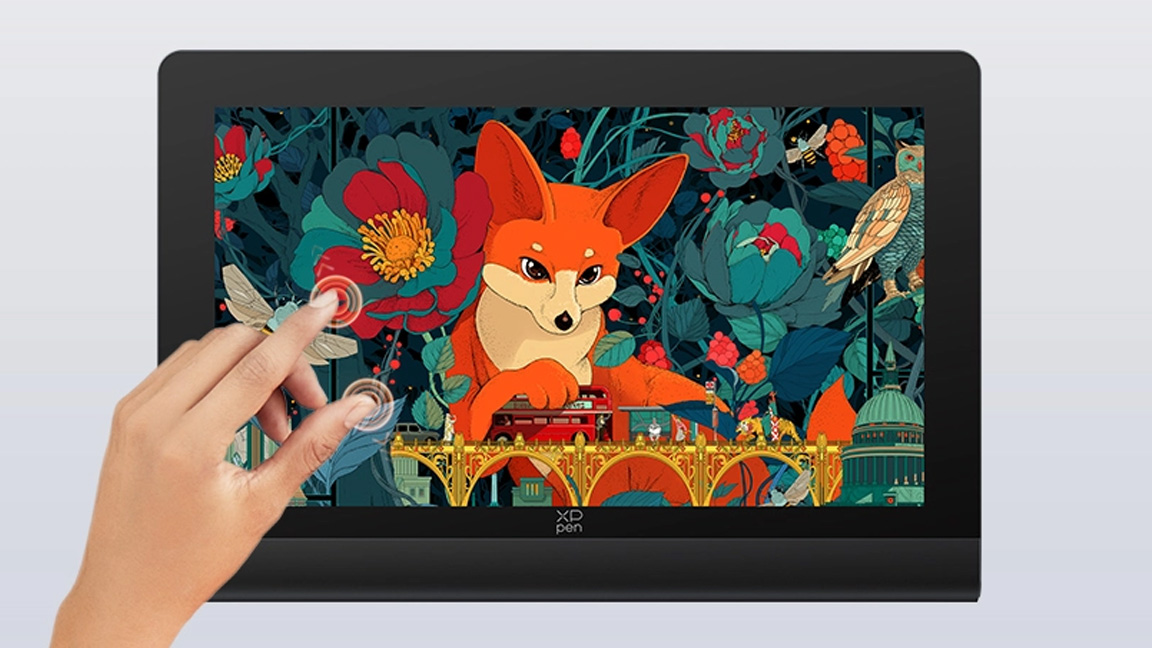Is the new Xencelabs Pen Display 16 Lite the best 4K OLED tablet for digital artists?
I’ve gone hands-on with several new drawing tablets from Huion, Wacom, and XPPen recently, but there was a nagging question – ‘where’s Xencelabs’ new tablet?’ Well, here it is, and it's another on-trend OLED drawing display; the new Xencelabs Pen Display 16 Lite is going head-to-head with Wacom Movink 13 and XPPen Artist Ultra 16, and it looks pretty good.
Xencelabs has released the Pen Display 16 Lite, a new 16-inch 4K OLED pen display, into an already crowded market, positioned as a larger, higher-resolution alternative to Wacom’s Movink 13 and similarly specced to XPPen’s Artist Ultra 16, minus the gesture control. Priced at $799, the display is aimed at illustrators, designers, and animators looking for a lightweight drawing device that offers the colour accuracy and control of a studio display.
The Pen Display 16 Lite is slim at 12mm and weighs 1.2kg, making it a portable option for artists who work across multiple locations. It joins Xencelabs’ existing range of professional tablets and can be used alongside the best drawing tablets and best digital art software, including Photoshop, Blender, and ZBrush.

A collaboration between art and technology
To accompany the launch, Xencelabs partnered with several studios to create new artwork featuring Ted Paul, a frog character drawn by fantasy illustrator Jesper Ejsing (a regular contributor to our sister magazine ImagineFX) and brought into 3D through a collaboration with Pixar’s RenderMan team and DAMN! Visdev Studio. The character will appear in Ted’s World, an animated short scheduled for release in 2026.
“Frogs aren’t naturally lovable,” said Ejsing. “I wanted to see how likable I could make a frog while still keeping that uncomfortable edge.”
DAMN! Visdev’s artists modelled and painted Ted Paul using various Xencelabs Pen Displays, including the 16 and 24 series (read our Xencelabs Pen Display 24 review).
“Maintaining the look of Jesper’s drawings was our top priority,” said Fabio Sciedlarczyk, co-founder of DAMN! Visdev. “The displays gave us the precision we needed to stay true to his original style.”
Daily design news, reviews, how-tos and more, as picked by the editors.
The project shows how artists are blending hand-drawn techniques with digital workflows, a space where pen displays continue to play a central role.

Display and features
The Pen Display 16 Lite features a 16-inch 4K OLED panel (3840x2160) capable of displaying around 1.07 billion colours and a high contrast ratio of 100,000:1. It covers multiple professional colour spaces, including Adobe RGB (98%), P3-D65 (98%), sRGB (99%), and Rec. 709 (99%), providing a broad and accurate palette for digital work. The screen is an anti-glare, textured surface intended to mimic the feel of drawing on paper.
Xencelabs says its display’s pressure curve has been calibrated through feedback from over 100 artists, allowing strokes to register from as little as three grams of force. The tablet includes two pens, the 3-Button Pen v2 and Thin Pen v2, both with erasers, along with a pen case, ten replacement nibs, a drawing glove, an adapter, and Bluetooth dongle.
It connects via USB-C with DisplayPort Alt Mode, and the optional Xencelabs Hub provides HDMI and DisplayPort compatibility for additional setup flexibility.
In some ways, there are few surprises here, testament to what I've become accustomed to from Xencelabs and new tablets in general. But the fact that there are a few gaps in the display's specs is welcome, but I'd love to try it and see if the tech sheet can match use.

Xencelabs vs Wacom vs XPPen
With specs in mind, I'll try and place the Xencelabs Pen Display 16 Lite within its competitive landscape. It helps to look at where it sits between Wacom and XPPen’s existing and new flagships to get an idea of why this Xencelabs release matters.
First up, Wacom’s Movink 13 stays true to its ultra-portable philosophy. Its compact Full HD OLED panel is bright and colour-accurate, and at just over 400g it’s easy to carry for on-the-go sketching. But the smaller size and lower resolution inevitably limit workspace and visual precision compared to larger displays.
Xencelabs’ Pen Display 16 Lite extends that concept into more professional territory. The 16-inch 4K OLED panel offers a noticeable jump in screen real estate, sharpness, and colour accuracy, while keeping the weight and thickness low enough for mobile setups. It’s a measured balance of portability and performance, ideal for artists who want a premium screen without the bulk of a full studio monitor.
The new XPPen Artist Ultra 16 4K OLED takes things a step further. Its 15.6-inch display also delivers 4 K clarity and deep OLED contrast, but adds extra finesse with touch gestures via its X-Touch system, dual styluses supporting 16K pressure levels, and true 10-bit colour covering 99% Adobe RGB, 99% sRGB, and 98% Display P3.
In short, Wacom’s Movink remains the lightweight option for portability; Xencelabs’ 16 Lite strikes the middle ground with 4K resolution and professional colour in a travel-ready format; and XPPen’s Artist Ultra 16 layers on touch control and advanced stylus tech for artists who need it (Xencelabs is canny in reducing costs by understanding not all creatives like touch control).



A measured approach to mobility
Xencelabs has positioned the Pen Display 16 Lite as a tool for artists who move between studio and remote work without wanting to compromise colour accuracy or drawing response. It sits between traditional studio displays and ultra-portable tablets, offering a balance that should appeal to professionals and students alike.
For anyone looking to work with the best digital art software on a portable, high-resolution display, the Xencelabs Pen Display 16 Lite is a thoughtful addition to the growing field of mobile pen displays and a credible rival to both Wacom and XPPen.
Visit the Xencelabs website for more details on the new Pen Display 16 Lite.

Ian Dean is Editor, Digital Arts & 3D at Creative Bloq, and the former editor of many leading magazines. These titles included ImagineFX, 3D World and video game titles Play and Official PlayStation Magazine. Ian launched Xbox magazine X360 and edited PlayStation World. For Creative Bloq, Ian combines his experiences to bring the latest news on digital art, VFX and video games and tech, and in his spare time he doodles in Procreate, ArtRage, and Rebelle while finding time to play Xbox and PS5.
You must confirm your public display name before commenting
Please logout and then login again, you will then be prompted to enter your display name.
